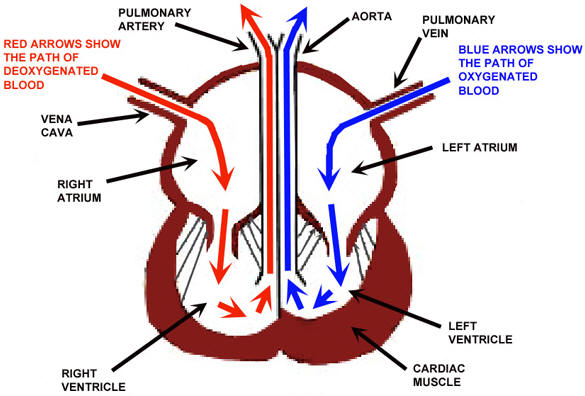What veins carry deoxygenated blood?
1 Answer
All veins except for the pulmonary vein.
Explanation:

The heart pumps oxygenated blood around the body by the arteries which then enter tissues through tiny capillaries. Once the oxygen has diffused across into the cells, carbon dioxide then bonds to the red blood cells instead.
Now the blood has very little oxygen and lots of carbon dioxide. It is transported back to the heart by veins (of which the biggest is the vena cava) to be pumped up to the lungs.
This is where it gets a bit strange. Previously, any vessel carrying oxygenated blood was an artery whilst any vessel carrying deoxygenated blood was a vein. With the lungs, it is reversed. The pulmonary artery takes deoxygenated blood to the lungs where it is oxygenated before being brought back to the heart by the pulmonary vein.
As there are these two exceptions, it is best to think of veins as being vessels that go into the heart (bringing deoxygenated blood in normally and oxygenated blood in after a trip to the lungs) and arteries as going out (out to the rest of the body with oxygenated blood usually and out to the lungs to oxygenate blood).
So, to conclude, veins almost always carry deoxygenated blood, unless they lead to the heart from the lungs (pulmonary vein).
Hope this helps; let me know if I can do anything else or if anything needs clearing up:)
